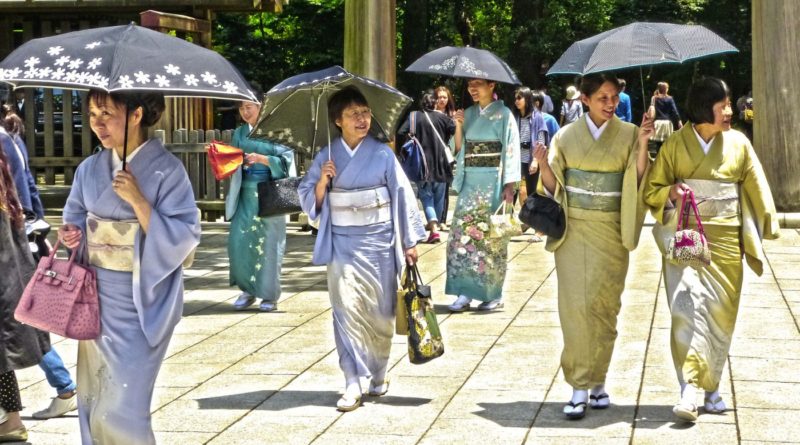The world of Japanese fashion: From traditional to avant-garde
The world of Japanese fashion is an ever-evolving and vibrant scene that seamlessly blends traditional elements with avant-garde designs. From kimono to streetwear, Japanese fashion has become renowned worldwide for its unique and innovative style. In this guide, we’ll explore the history and evolution of Japanese fashion, the different styles and trends, and where to find the best shopping destinations.
History and Evolution of Japanese Fashion Japanese fashion has a rich history that spans centuries. Traditionally, Japanese clothing was made from natural fibers such as silk, cotton, and hemp. The kimono, a traditional Japanese garment, was the most common attire until the mid-19th century when Japan opened its doors to the West.
During this time, Western fashion and influences began to seep into Japan, resulting in a hybrid style that blended traditional elements with Western designs. In the 1960s, the Japanese fashion industry gained international recognition when designers such as Kenzo Takada, Issey Miyake, and Yohji Yamamoto introduced their avant-garde designs to the world.
Since then, Japanese fashion has continued to evolve and innovate, with designers such as Rei Kawakubo of Comme des Garçons and Jun Takahashi of Undercover pushing the boundaries of fashion with their bold and unconventional designs.
Styles and Trends in Japanese Fashion Japanese fashion is known for its diversity and experimentation, with a wide range of styles and trends that cater to different tastes and preferences. Here are some of the most popular styles and trends in Japanese fashion:
- Kimono: The kimono is a traditional Japanese garment that is still widely worn today, especially during formal occasions such as weddings and tea ceremonies. Kimonos are typically made from silk and feature intricate patterns and designs.
- Lolita fashion: Lolita fashion is a popular subculture that originated in Japan and is characterized by its cute and girly style. It typically features frilly dresses, petticoats, and bows, and is inspired by Victorian and Rococo fashion.
- Streetwear: Japanese streetwear has become a global phenomenon, with brands such as A Bathing Ape, Neighborhood, and Comme des Garçons PLAY leading the charge. Japanese streetwear is known for its bold graphics, oversized silhouettes, and unique prints.
- Harajuku fashion: Harajuku is a neighborhood in Tokyo that has become synonymous with alternative fashion and subcultures. Harajuku fashion is characterized by its eclectic and colorful style, with a mix of different influences and genres.
- Avant-garde fashion: Avant-garde fashion is a hallmark of Japanese fashion, with designers such as Rei Kawakubo and Yohji Yamamoto pushing the boundaries of what is considered “fashionable.” Avant-garde fashion is characterized by its unconventional designs, exaggerated proportions, and experimental materials.
Shopping for Japanese Fashion If you’re looking to explore the world of Japanese fashion, there are plenty of shopping destinations to choose from. Here are some of the best places to shop for Japanese fashion:
- Shibuya: Shibuya is a popular shopping district in Tokyo that is known for its trendy and youthful fashion. It’s home to department stores such as Shibuya 109 and Parco, as well as a variety of independent boutiques and vintage shops.
- Harajuku: As mentioned earlier, Harajuku is a neighborhood in Tokyo that is famous for its alternative fashion and subcultures. It’s home to a variety of fashion boutiques, vintage shops, and second-hand stores, making it a great place to explore for unique and eclectic fashion finds.
- Omotesando: Omotesando is a tree-lined boulevard in Tokyo that is known for its upscale and luxury fashion. The architecture of the buildings here is also worth admiring, with many of them featuring innovative and eye-catching designs.
These are just a few of the many places where you can shop for Japanese fashion. Whether you’re interested in traditional styles or the latest fashion trends, Japan has something to offer for everyone.
If you’re interested in traditional Japanese fashion, be sure to visit a kimono rental shop and try on a beautiful silk kimono for yourself. You can also visit traditional crafts markets to see artisans at work and purchase unique textiles and accessories.
Fashion in Japan is a fascinating mix of traditional and modern styles, with a focus on quality craftsmanship and attention to detail. Whether you’re interested in avant-garde streetwear or traditional kimonos, Japan has something for everyone in the world of fashion.

